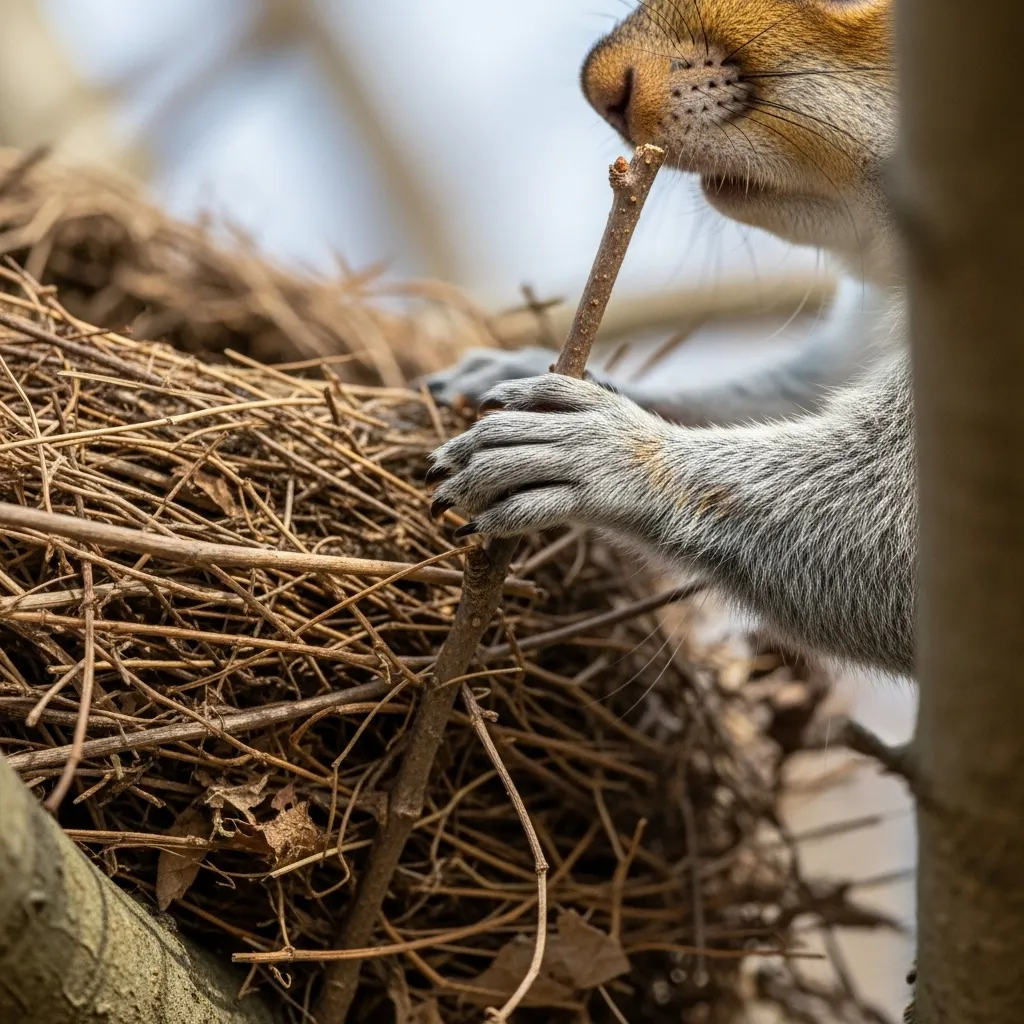
7. Their Nests are Architectural Marvels
Gray squirrels are skilled builders, constructing two distinct types of homes to suit different needs and seasons. The most visible type of nest is called a “drey.” This is the large, messy-looking ball of leaves and twigs you often see wedged high in the forks of tree branches. While they may look precarious from the ground, dreys are intricately constructed.
The squirrel starts by weaving a platform of twigs, often still with green leaves attached for flexibility. It then builds a spherical outer shell of more twigs and dry leaves, creating a weather-resistant layer. The inside is lined with softer materials like moss, shredded bark, grass, fur, or even scavenged scraps of paper and insulation. A typical drey is about 12 to 20 inches (30-50 cm) in diameter and has at least one entry/exit hole. Dreys are primarily used for resting during the day and for raising summer litters.
The second type of home is a “den,” which is a cavity in a tree trunk or a large limb. Dens are often located in old woodpecker holes or natural hollows that have formed where a branch has broken off. These are the preferred choice for overwintering and for raising the first litter of the year in early spring. A den offers superior protection from cold, wind, and predators compared to a drey. A squirrel will often maintain one or more dens in its territory, along with several dreys, giving it multiple escape options and places to rest.
Observing nest-building activity is a great way to watch squirrel behavior, especially in the fall as they prepare for winter. However, it is crucial to observe from a distance and never disturb a nest or a den. Sharing specific nest locations, especially online, can inadvertently lead predators or ill-intentioned humans to the site.















